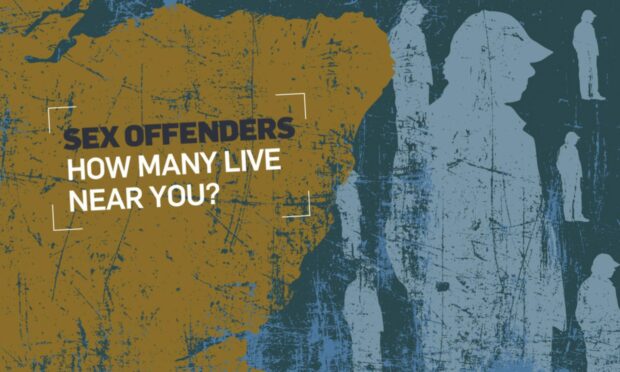More than 450 registered sex offenders are now living across the north-east, including 206 in Aberdeen alone.
The police have released their annual statistics showing where registered sex offenders live across Scotland.
It revealed that there are 463 registered sex offenders living across the north-east.
Locals can now search for their postcode using an interactive map created by DC Thomson.
While the data does not identify the full postcode of where registered sex offenders live, it provides the first half making it possible to see the general area.
Officers also provide information confirming the number of missing or wanted sex offenders.
They said as of November this year, no sex offenders are registered missing.
However, the force is currently searching for 15 individuals, 13 of whom are believed to have left the UK.
Where do most sex offenders live in the north-east?
Some areas have more sex offenders registered as residing there than others, with 206 living in Aberdeen and 168 in Aberdeenshire.
Additionally, 89 sex offenders are registered in the Moray area.
In Aberdeen, the largest number of sex offenders reside in the AB24 area, which includes areas such as Old Aberdeen, Tillydrone and Seaton.
A total of 55 offenders are registered with an AB24 postcode, compared with 26 who have an AB25 postcode who live in areas like Rosemount and Kittybrewster.
The AB16 area, including Mastrick and Northfield, has 25 sex offenders registered in the area.
Check how many sex offenders live near you
You can use our interactive map to explore the areas of Scotland or enter the first half of your postcode to look at it in detail.
Meanwhile, in Aberdeenshire, the highest concentration of sex offenders live in the AB42 Peterhead area with 39 registered offenders and in AB43 Fraserburgh with 21 offenders.
In Moray, the highest number of sex offenders live in IV30 with 33 offenders living in the Elgin area, and 21 offenders in AB56 in the Buckie area.
Why is someone registered as a sex offender?
If someone is convicted of a sexual offence, their details will be held on the Sex Offenders Register.
Offences are not limited to those who harm children, but also include sexual crimes such as rape, sexual assault and indecent exposure.
Those who are required to register must do so at a police station within three days of their conviction or release from prison with details like their address and bank details.
They also have to notify officers if they plan to travel abroad or spend more than seven days away from home.
The police put risk assessments and offender management strategies in place to reduce the risk of harm to people living near sex offenders.
Registered sex offenders can be male or female and according to the police come from “all walks of life”.
A statement on their website says: “People who commit sexual offences differ in their level of impulsiveness, their sexual interests, their attitudes and beliefs about offending, their level of risk to the public, and their desire to change their behaviour.
“There appears to be a common belief all sex offenders have committed sexual offences against children, or present a risk of sexual harm to children. This is simply not the case. Not all sex offenders commit sexual offences against children nor do they all present a risk of sexual harm to children.”
